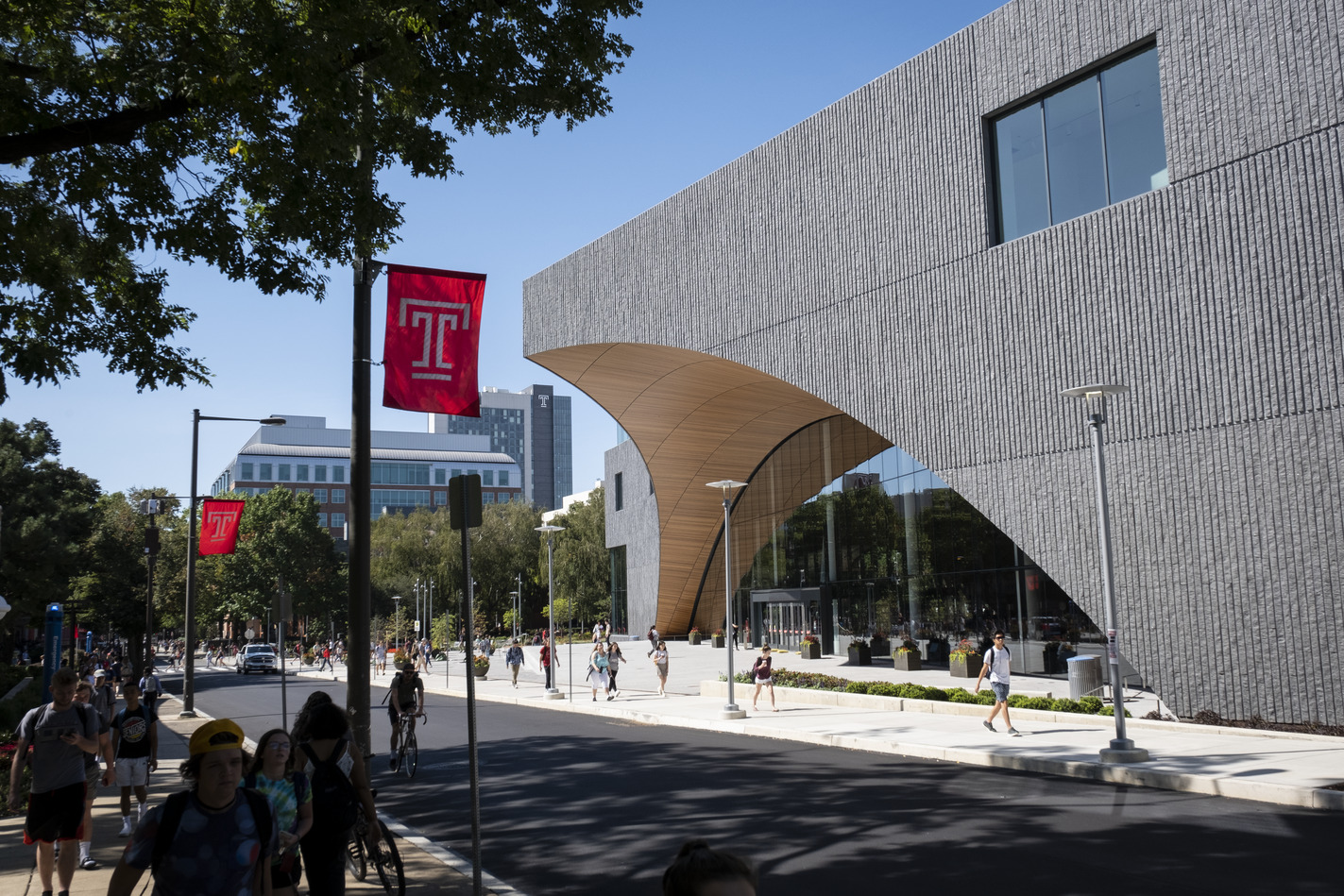What should the Temple of the future look like? Students, faculty, staff and alumni now have the opportunity to make their voices heard on a major new campus development plan called Boundless Temple.
A cutting-edge interactive map survey is enabling the Temple community to illustrate how they experience campus day to day. Through this survey, listening sessions and other online feedback, the community can tell university planners about the changes they would like to see to the university’s built environment, which includes campus buildings, landscape architecture and roads. The goal of the campus development plan is to ensure that Temple’s built environment meaningfully contributes to the success of students, academic programs, faculty and staff, alumni, resources and services, learning spaces, and our community neighbors in the years and decades ahead. The plan will also look at how we can address current enrollment and safety issues and identify opportunities for innovation.
In partnership with Sasaki Associates, a world-renowned architecture and planning firm, the survey will capture thousands of voices to inform the look and feel of Temple’s classrooms, housing, outdoor spaces and much more. Participants have the opportunity to rate and leave comments about the physical attributes of their favorite places to eat and study, or areas that they feel are unwelcoming. Gathering community input is the first step of the planning initiative, which will result in recommendations for future development.
Temple and other universities typically initiate a comprehensive planning process about every 10 years. Visualize Temple, completed in 2014, led to transformational developments like the Charles Library and the Temple Sports Complex. More than 3,000 Temple community members gave their input and ideas for that plan, which presented seven planning goals grounded in Temple’s past, present and future. Much of Visualize Temple was implemented in some form or another.
A decade after Visualize Temple and in the wake of COVID-19, Temple is reimagining its built environment once again, looking ahead to enrich students’ experiences, prepare students for the future of work, address demographic shifts in enrollment and support the enhancement of safety resources already underway. In addition to evolving university priorities, the overall landscape of higher education continues to change at a rapid pace. Universities need more flexible and agile spaces for learning, working and collaborating, as they empower students to meet the needs of employers and future economies. At the same time, Gen Z and Gen Alpha students want a greater sense of safety and belonging, and richer opportunities to connect with each other and their professors.
Since fall 2022, Temple’s Project Delivery Group—which is responsible for the university’s planning, design and construction—has been working with the Boundless Temple Steering Committee—which comprises wide-ranging constituents from across the university—to identify the plan phases and objectives. Temple’s campus development plan will take all of these factors into consideration to help students thrive and position the university for future success. Along with the survey, the university is conducting a series of focused thematic listening sessions with a wide spectrum of Temple students, faculty, staff, alumni and other constituents. This constituent feedback and more will be used to create campus planning recommendations for the coming decade.
Here’s what the community needs to know about the survey.
Why is the survey important?
Virtually all critical decisions made by a university, from enrollment to safety to programming, are intertwined with its built environment. Temple will use the survey results to make sure the campus meets the needs of the community today and well into the future. The campus development plan will affect how the Temple community learns, collaborates, works, eats and socializes on campus in the decades ahead.
What does the survey look like?
For the first time, Temple is conducting a wholly interactive map-based survey. Using markers and drawing tools, users can create a virtual map of how they spend their day on campus. They can show how they use spaces on campus and share how they feel about them. In addition to illustrating how they travel to, from and across campus as well as where they spend time, they can leave detailed comments. Participants are encouraged to share their thoughts and concerns about how Temple can support them, how the university can address topics that are meaningful to them and how the built environment can be improved to benefit the entire community. All of the inputs are kept anonymous.
What areas does it cover?
The survey encompasses Main Campus (out to the patrol zone border), Health Sciences Center, Center City and Ambler. Designers conducted a complete inventory of each campus to create a separate map for each.
How long does it take to complete?
About five to 10 minutes from start to finish. Responses will not be saved, so users are encouraged to complete it in one session.
What happens next?
Once the survey period closes, algorithms will absorb and analyze all of the anonymous data collected from respondents into a report. From there, the Boundless Temple Steering Committee will make short- and long-term recommendations. Survey findings and analysis will be updated on the campus plan website, which will offer additional opportunities for comments and feedback. The university will also hold in-person and virtual forums for the Temple community to comment on survey findings. Ultimately, the university will use this analysis to decide what physical changes to prioritize and enact in the future.
The survey will soon be open to Temple students, faculty, staff and alumni for their feedback, with more information about how to access it as well as how to use it. Everyone is encouraged to provide their feedback and be an integral part of shaping Temple’s future.
-Wendy Ramunno

